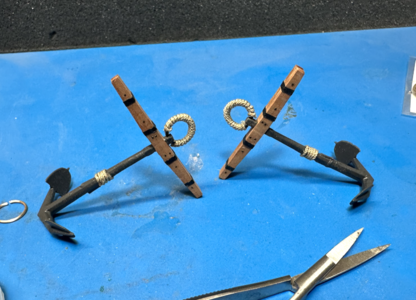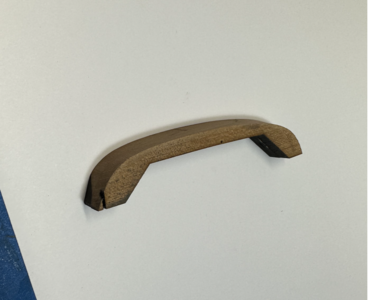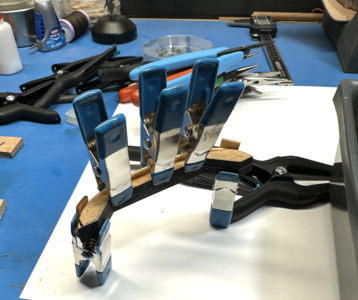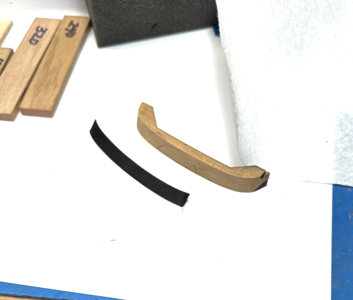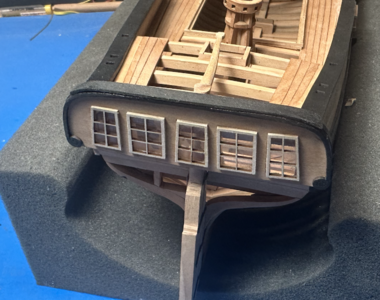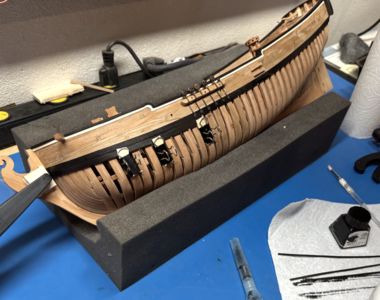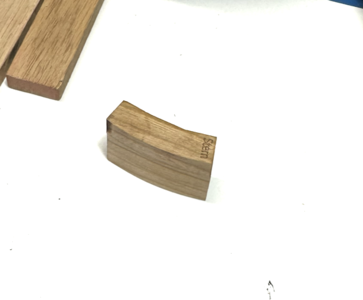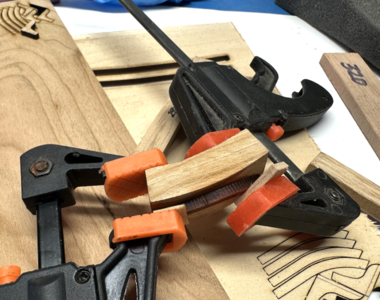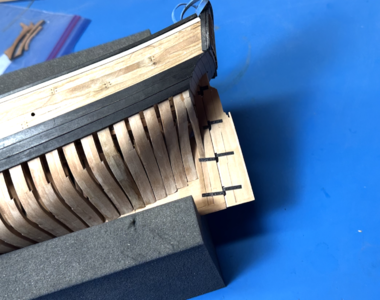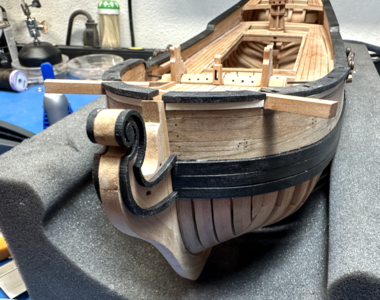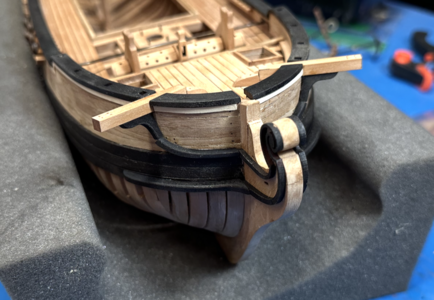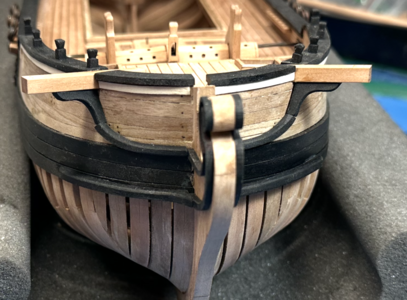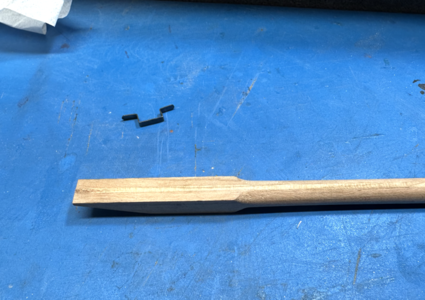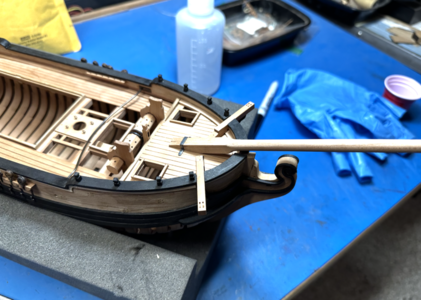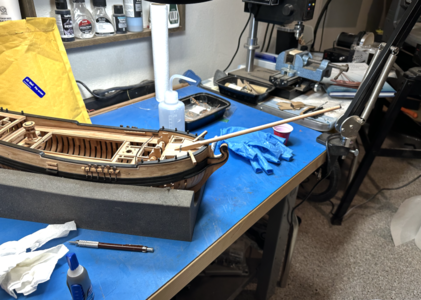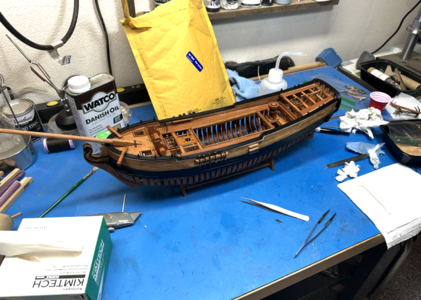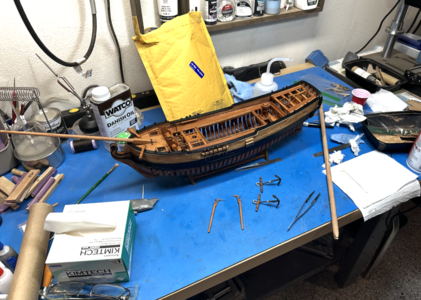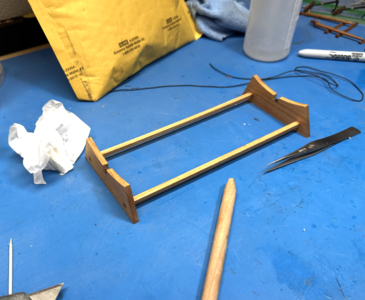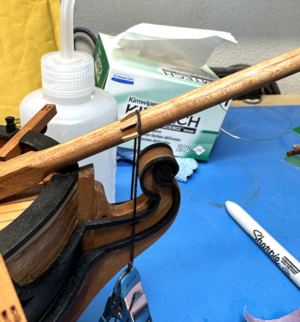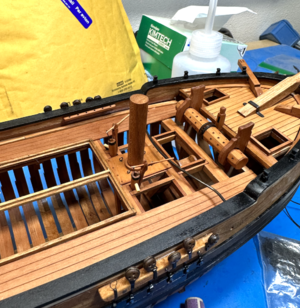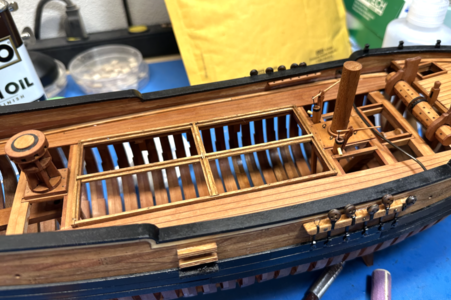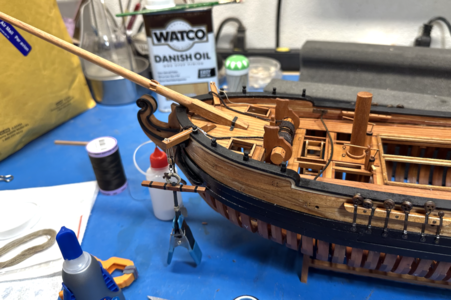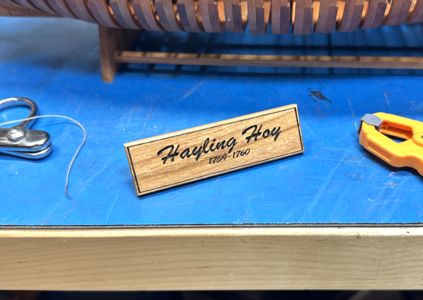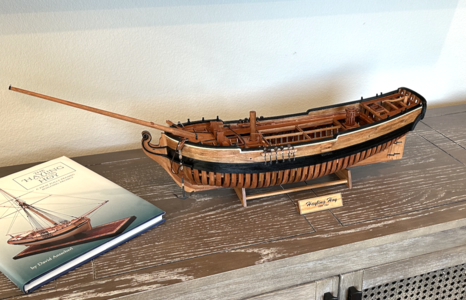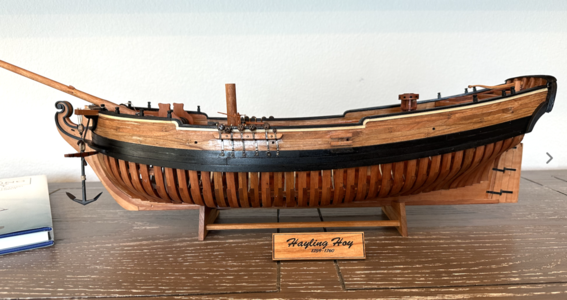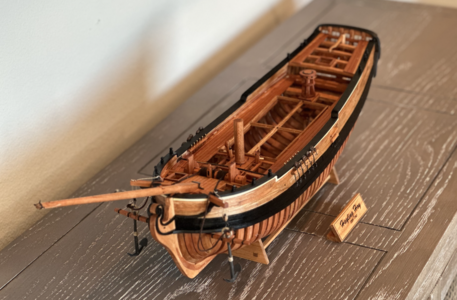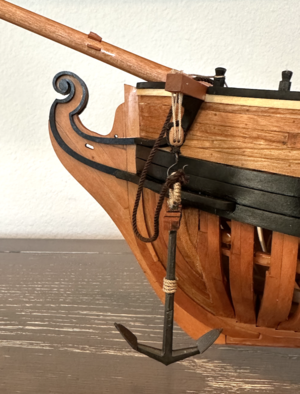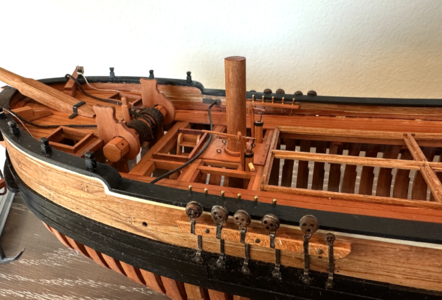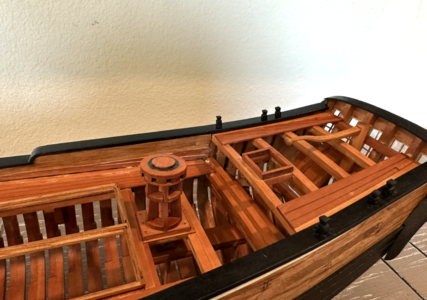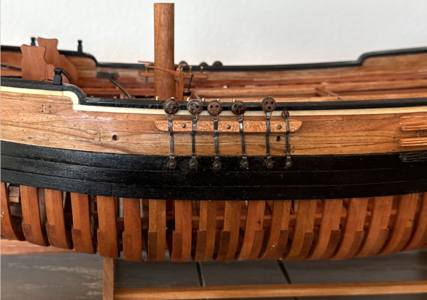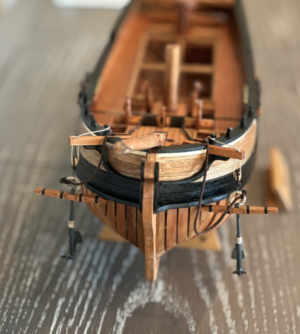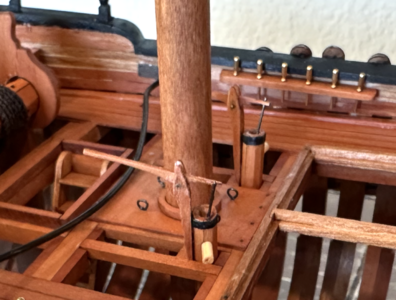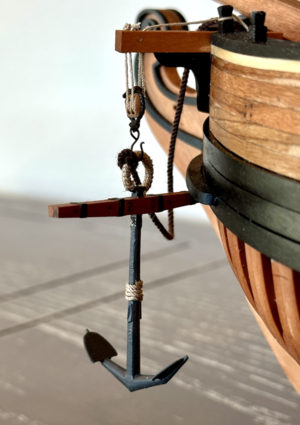Wrapping up the chains and channels. I've never done more than two chains per side and strictly per kit parts. This time I went 100% scratch using the book as my guide. Well, I used pre-made deadeyes, but close. I hacked up and filed down a lot of brass to make 6 chains per side.
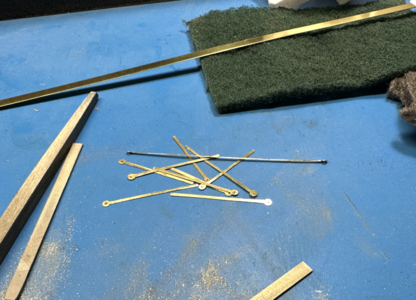
I modified the channel I laser cut from the plans by including 3 bolts per side for a more solid look. They were easily applied to the ship.
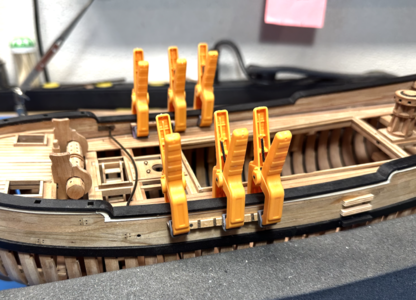
The book specified making rings for the deadeyes on a 15/64" shank. For some reason i actually had the right size, although I suspect no one would have missed 0.0156". The rings are cut, shaped, silver soldered, balckened, and than partially crimped onto the deadeye to an approximately right shape. The syringe is something I got from Rio Grande for jewelry making, an all-in-one solder and flux. I just put a tiny inch worm on clean brass at the gap in the ring, hit with butane flame until it flashes a silver color, and it's solid. Cool stuff. Use with lots of ventilation. Now even I can solder shut rings, eyebolts, and hooks. And that rather generic sounding "Brass Darkening Solution" shown works well and leaves no discoloration of wood if you put a dot or two on an inlaid brass bolt. Brass black turns wood green/grey.
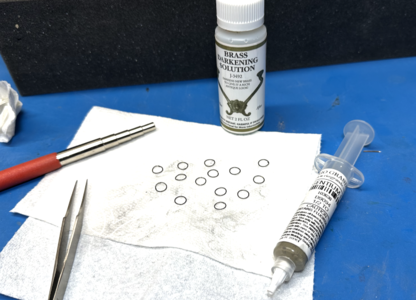
Custom vs. kit rings for deadeyes (kit bottom right). The kit ones and photoetched. It probably would have looked fine from a normal viewing distance, but I'd like to get practice with the finer details done from scratch when I can.
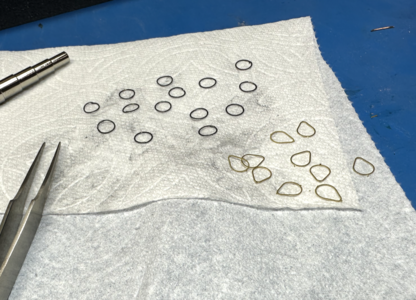
Shaping up...
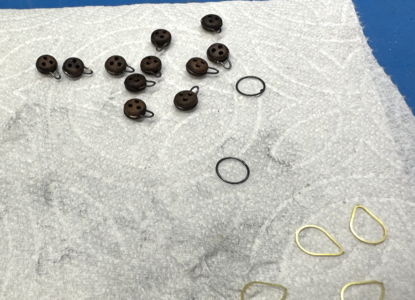
Chains being done one at a time. Holes for the bolts in the wales were done in advance (some mistakes seen on this side, will try to cover with ink). Each chain is shaped invidually, blackened, the deadeye applied, and then glued into place with a little CA and a bolt through the hole. In progress below...
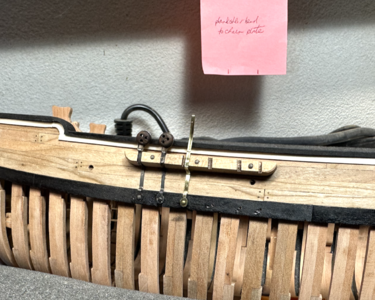
Final product on starboard. I can see about 5 things wrong with this, but I'll keep my nitpicking to myself. I am not ashamed of my first chain and channels of any complexity, and from scratch at that. I think this looks much better than I would have gotten with the kit, even if I botched a few things.
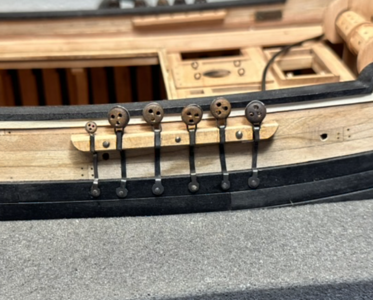
A long post for what you guys generally just show a picture of the end product, but confession can be good for the soul. Plus this took a week, on and off.


